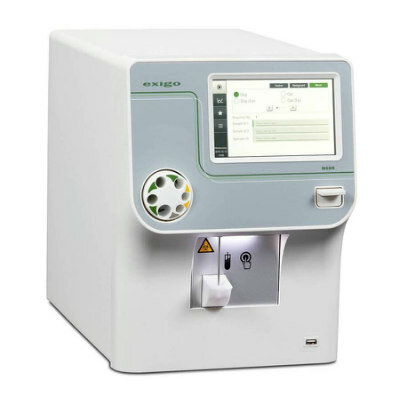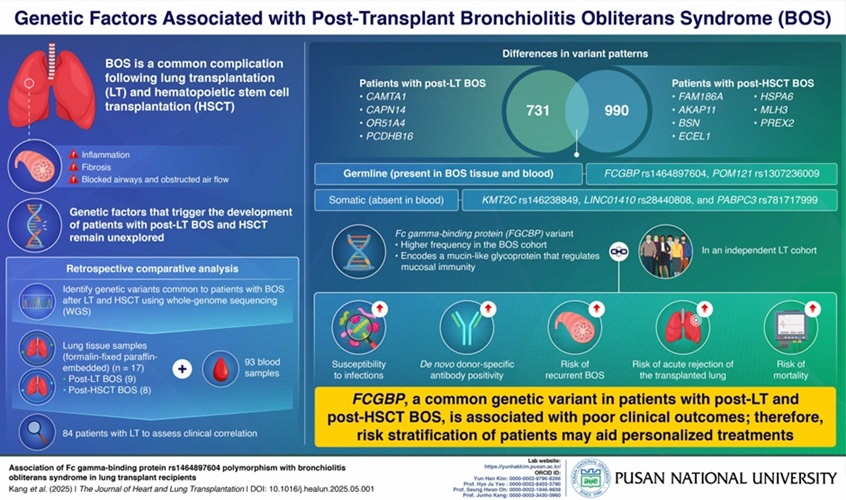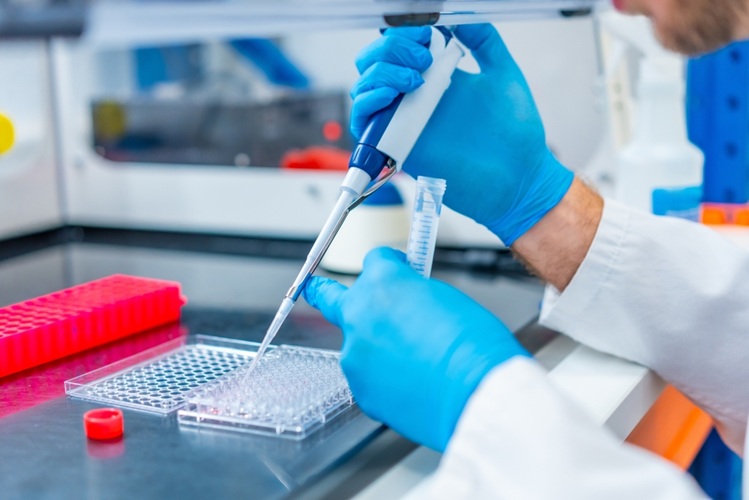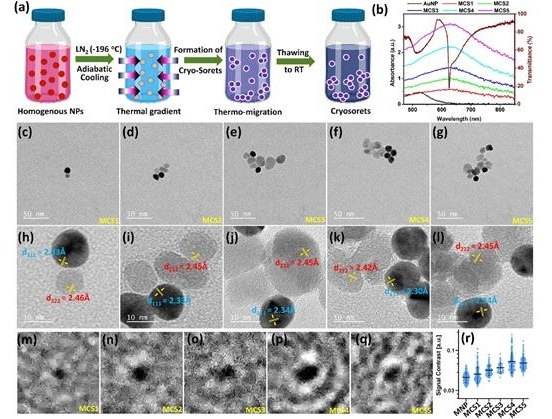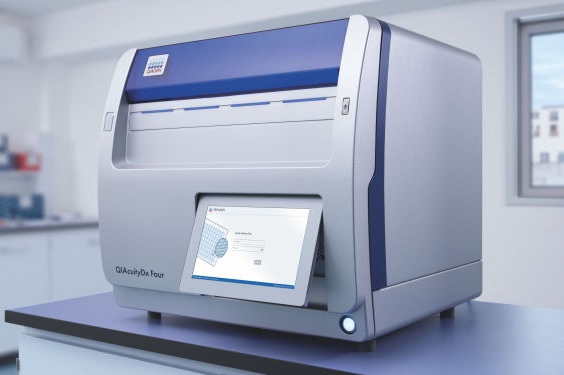Biomarker of Kidney Disease Identified in Sickle Cell Anemia
|
By LabMedica International staff writers Posted on 27 Dec 2017 |
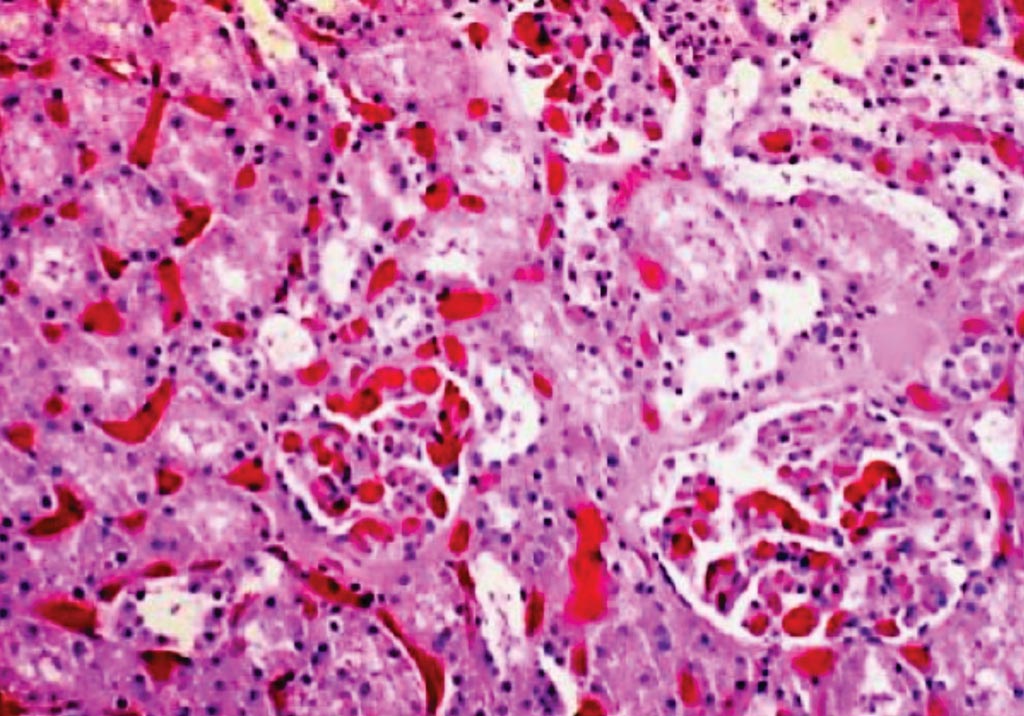
Image: A histopathology of a fatal sickle cell crisis which resulted from sickling within the vasa recta within the kidney. Glomeruli are occluded by sickle cells (Photo courtesy of Dr. Vishai Ramteke).
In patients with sickle cell anemia (SCA), urinary ceruloplasmin (CP) may complement urinary free hemoglobin as a noninvasive biomarker for chronic kidney disease. Ceruloplasmin is a ferrioxidase that is important facilitator of cellular iron export by ferroportin and of iron binding by transferrin.
Hemolysis, vaso-occlusion, and ischemia-reperfusion injury are the clinical hallmarks of sickle cell disease (SCD). The renal manifestations of SCD range from various tubular and glomerular functional abnormalities to gross anatomic alterations of the kidneys. Chronic kidney disease (CKD) is a prevalent complication of sickle cell disease (SCD) and associated with early mortality. Hemoglobinuria is a risk factor for the development and progression of CKD.
Clinical scientists at the Howard University College of Medicine (Washington, DC, USA) conducted mass-spectrometry proteomic analysis on urine samples from patients with SCA and hemoglobinuria and six samples with high hemoglobin were compared to SCA control samples.
The team found that of 270 proteins that were initially identified, they researchers found that 48 were significantly up- or down-regulated in the samples with hemoglobinuria (P<0.0001). Subsequently, 18 extracellular proteins were focused on, including CP, a protein involved in iron metabolism. In SCA samples with hemoglobinuria, CP was present at much higher levels than that seen in SCA controls (P=1.8 × 10 −5).
The authors concluded that despite the increased urinary levels of ceruloplasmin, transferrin, and ferritin in the urine of SCA patients, only urinary CP demonstrated overall good correlations with chronic kidney disease (CKD) stage and urinary hemoglobin levels and represents a plausible noninvasive biomarker of CKD risk in SCA patients. The study was published on November 27, 2017, in the American Journal of Hematology.
Related Links:
Howard University College of Medicine
Hemolysis, vaso-occlusion, and ischemia-reperfusion injury are the clinical hallmarks of sickle cell disease (SCD). The renal manifestations of SCD range from various tubular and glomerular functional abnormalities to gross anatomic alterations of the kidneys. Chronic kidney disease (CKD) is a prevalent complication of sickle cell disease (SCD) and associated with early mortality. Hemoglobinuria is a risk factor for the development and progression of CKD.
Clinical scientists at the Howard University College of Medicine (Washington, DC, USA) conducted mass-spectrometry proteomic analysis on urine samples from patients with SCA and hemoglobinuria and six samples with high hemoglobin were compared to SCA control samples.
The team found that of 270 proteins that were initially identified, they researchers found that 48 were significantly up- or down-regulated in the samples with hemoglobinuria (P<0.0001). Subsequently, 18 extracellular proteins were focused on, including CP, a protein involved in iron metabolism. In SCA samples with hemoglobinuria, CP was present at much higher levels than that seen in SCA controls (P=1.8 × 10 −5).
The authors concluded that despite the increased urinary levels of ceruloplasmin, transferrin, and ferritin in the urine of SCA patients, only urinary CP demonstrated overall good correlations with chronic kidney disease (CKD) stage and urinary hemoglobin levels and represents a plausible noninvasive biomarker of CKD risk in SCA patients. The study was published on November 27, 2017, in the American Journal of Hematology.
Related Links:
Howard University College of Medicine
Latest Hematology News
- Disposable Cartridge-Based Test Delivers Rapid and Accurate CBC Results
- First Point-of-Care Heparin Monitoring Test Provides Results in Under 15 Minutes

- New Scoring System Predicts Risk of Developing Cancer from Common Blood Disorder
- Non-Invasive Prenatal Test for Fetal RhD Status Demonstrates 100% Accuracy
- WBC Count Could Predict Severity of COVID-19 Symptoms
- New Platelet Counting Technology to Help Labs Prevent Diagnosis Errors
- Streamlined Approach to Testing for Heparin-Induced Thrombocytopenia Improves Diagnostic Accuracy
- POC Hemostasis System Could Help Prevent Maternal Deaths
- New Test Assesses Oxygen Delivering Ability of Red Blood Cells by Measuring Their Shape
- Personalized CBC Testing Could Help Diagnose Early-Stage Diseases in Healthy Individuals
- Non-Invasive Test Solution Determines Fetal RhD Status from Maternal Plasma
- First-Of-Its-Kind Smartphone Technology Noninvasively Measures Blood Hemoglobin Levels at POC

- Next Gen CBC and Sepsis Diagnostic System Targets Faster, Earlier, Easier Results
- Newly Discovered Blood Group System to Help Identify and Treat Rare Patients
- Blood Platelet Score Detects Previously Unmeasured Risk of Heart Attack and Stroke
- Automated Benchtop System to Bring Blood Testing To Anyone, Anywhere
Channels
Molecular Diagnostics
view channel
Blood Test Could Predict Likelihood of Breast Cancer Spreading to The Bone
When breast cancer spreads to other parts of the body, it becomes secondary or metastatic breast cancer—a stage that, while treatable, is currently incurable. The bone is the most common site for this... Read more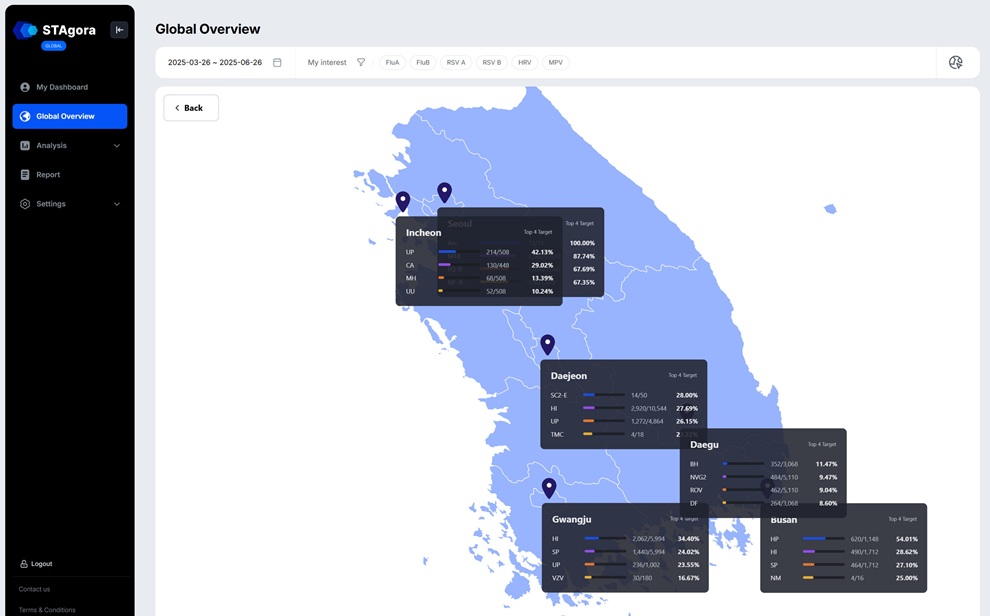
New Infectious Disease Analytics Platform Speeds Up Clinical Decision-Making at POC
During the COVID-19 pandemic, the importance of accurate and timely interpretation of diagnostic data became evident in shaping both public health strategies and clinical outcomes. As the world now grapples... Read moreHematology
view channel
Disposable Cartridge-Based Test Delivers Rapid and Accurate CBC Results
Complete Blood Count (CBC) is one of the most commonly ordered lab tests, crucial for diagnosing diseases, monitoring therapies, and conducting routine health screenings. However, more than 90% of physician... Read more
First Point-of-Care Heparin Monitoring Test Provides Results in Under 15 Minutes
Heparin dosing requires careful management to avoid both bleeding and clotting complications. In high-risk situations like extracorporeal membrane oxygenation (ECMO), mortality rates can reach about 50%,... Read moreImmunology
view channel
Blood Test Detects Organ Rejection in Heart Transplant Patients
Following a heart transplant, patients are required to undergo surgical biopsies so that physicians can assess the possibility of organ rejection. Rejection happens when the recipient’s immune system identifies... Read more
Liquid Biopsy Approach to Transform Diagnosis, Monitoring and Treatment of Lung Cancer
Lung cancer continues to be a major contributor to cancer-related deaths globally, with its biological complexity and diverse regulatory processes making diagnosis and treatment particularly difficult.... Read more
Computational Tool Exposes Hidden Cancer DNA Changes Influencing Treatment Resistance
Structural changes in tumor DNA are among the most damaging genetic alterations in cancer, yet they often go undetected, particularly when tissue samples are degraded or of low quality. These hidden genomic... Read moreMicrobiology
view channel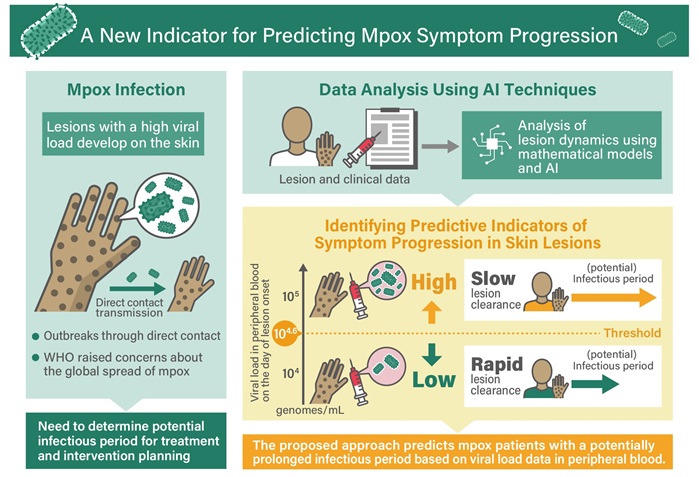
Viral Load Tests Can Help Predict Mpox Severity
Mpox is a viral infection that causes flu-like symptoms and a characteristic rash, which evolves significantly over time and varies between patients. The disease spreads mainly through direct contact with... Read more
Gut Microbiota Analysis Enables Early and Non-Invasive Detection of Gestational Diabetes
Gestational diabetes mellitus is a common metabolic disorder marked by abnormal glucose metabolism during pregnancy, typically emerging in the mid to late stages. It significantly heightens the risk of... Read morePathology
view channelAI Performs Virtual Tissue Staining at Super-Resolution
Conventional histopathology, essential for diagnosing various diseases, typically involves chemically staining tissue samples to reveal cellular structures under a microscope. This process, known as “histochemical... Read moreAI-Driven Preliminary Testing for Pancreatic Cancer Enhances Prognosis
Pancreatic cancer poses a major global health threat due to its high mortality rate, with 467,409 deaths and 510,992 new cases reported worldwide in 2022. Often referred to as the "king" of all cancers,... Read more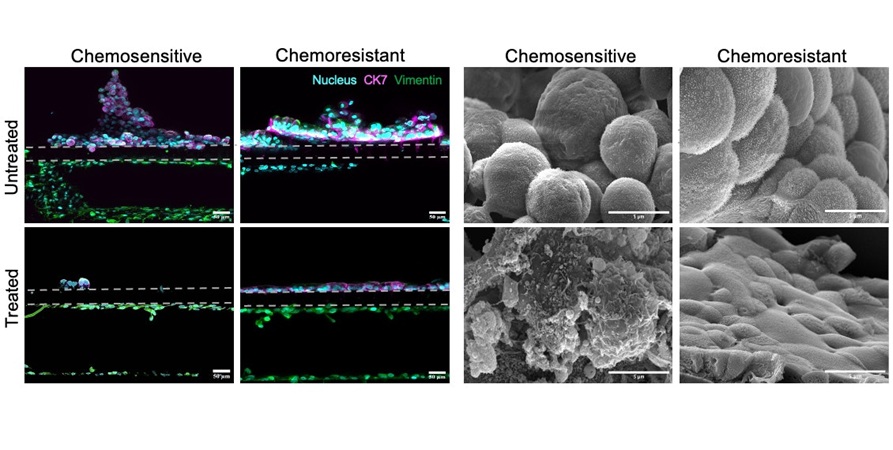
Cancer Chip Accurately Predicts Patient-Specific Chemotherapy Response
Esophageal adenocarcinoma (EAC), one of the two primary types of esophageal cancer, ranks as the sixth leading cause of cancer-related deaths worldwide and currently lacks effective targeted therapies.... Read more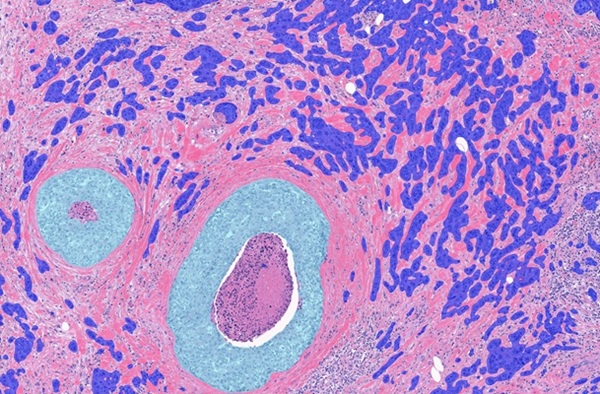
Clinical AI Solution for Automatic Breast Cancer Grading Improves Diagnostic Accuracy
Labs that use traditional image analysis methods often suffer from bottlenecks and delays. By digitizing their pathology practices, labs can streamline their work, allowing them to take on larger caseloads... Read moreTechnology
view channel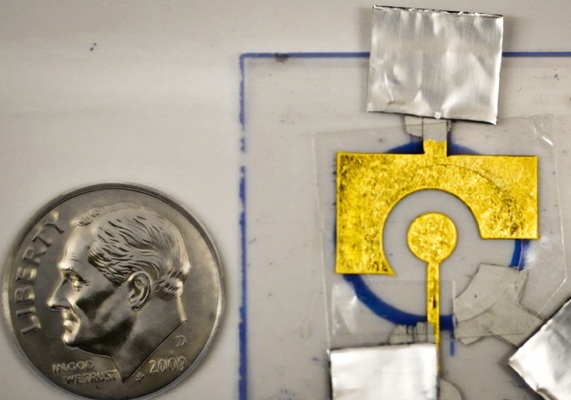
Inexpensive DNA Coated Electrode Paves Way for Disposable Diagnostics
Many people around the world still lack access to affordable, easy-to-use diagnostics for diseases like cancer, HIV, and influenza. Conventional sensors, while accurate, often rely on expensive equipment... Read more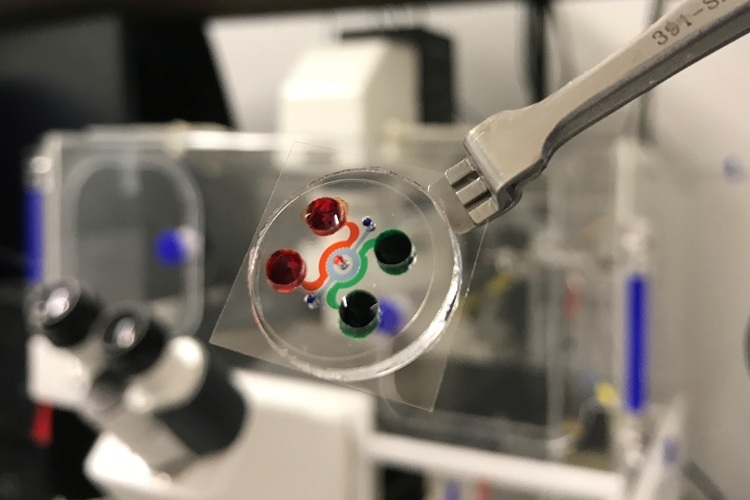
New Miniature Device to Transform Testing of Blood Cancer Treatments
Chimeric antigen receptor (CAR) T cell therapy has emerged as a groundbreaking treatment for blood cancers like leukemia, offering hope to patients when other treatments fail. However, despite its promise,... Read moreIndustry
view channel
AMP Releases Best Practice Recommendations to Guide Clinical Laboratories Offering HRD Testing
Homologous recombination deficiency (HRD) testing identifies tumors that are unable to effectively repair DNA damage through the homologous recombination repair pathway. This deficiency is often linked... Read more




